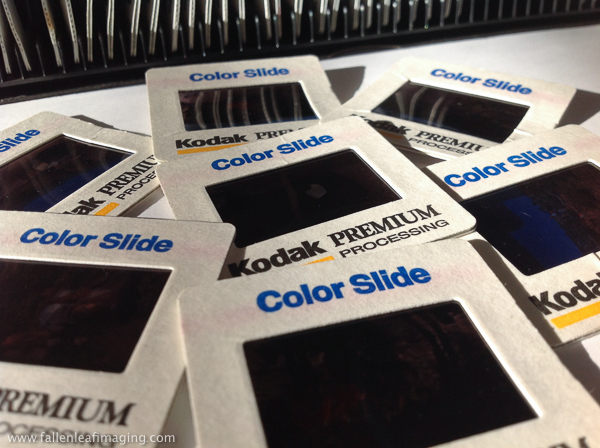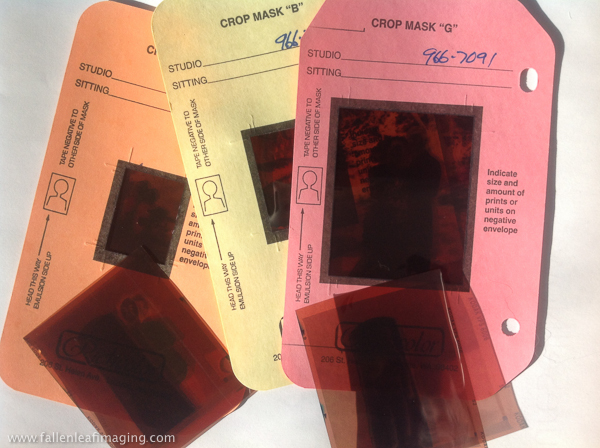Deciding to buy a new slide and negative scanner or a used one… not an easy choice.
December 2013 – Dominic Urbano

The many boxes of slides and negatives that have been sitting in the loft of my shop have been quietly calling to me to scan them for some time now. Digitizing the substantial collection of film based images has been on my ‘to do’ list for some time, but like so many non urgent items on my list I hadn’t made any real effort to start the process. Then, in an inspired afternoon of cleaning out old boxes of stuff in my shop in order to bring a bit of order to the years of chaos, I came across those many boxes of slides and negatives and decided maybe I really should do something about digitizing them. It looks like I was almost too late.
As I started researching slide and negative scanners I quickly realized that the technology that I would need to make the scans is rapidly disappearing from the market. It was a little startling to realize that the window of time I had to digitize my film and slides was closing. Nikon Coolscan… no longer made. Minolta Dimage scanners… no longer made. New dedicated slide and negative scanners were at best getting luke warm reviews and none could handle both my 35mm and medium format films. This low priority job was suddenly a high priority. After a few weeks of dizzying research, I narrowed my options down to two. The Nikon Coolscan 9000 or the Epson Perfection V750 flatbed.

The Coolscan 9000 is no longer produced and is only available used for about $3000. There is a pretty good number of these units available on the used market and demand continues to be quite high despite the problems with trying to make the machine talk to new computer operating systems. Without argument this unit would be the best machine to meet my scanning needs. It could handle both my 35mm and medium format films and deliver superb quality scans. Unfortunately purchasing the Nikon scanning solution would come with a few problems.
The used, and no longer produced, scanner game (such as the Nikon Coolscan units) goes something like this. 1. Buy a used machine with an unknown history. (“Mint!” on ebay) for as much or more than it sold for new eight+ years ago. 2. Purchase 3rd party scanning software. 3. Search the internet forums for ways to get it all to work with your specific computer and operating system. 4. Assuming you get it working… scan all of your slides and negatives. 5. After you are done with the project, sell the scanner on e-bay for just as much or more than you bought it for. (In ‘mint’ condition of course… just like the guy you bought it from)
What all of that amounts to is a $3000 roll of the dice. I’m not real keen on purchasing things that ‘might’ work… at any price. Also, I could not shake the feeling that at some point soon the entire bottom would be dropping out of the used slide scanner market. The computer and software industry is going to continue to rocket forward at its usual breakneck speed and the lifelines that allow these scanners to live on are getting stretched pretty thin. With every passing month the people who currently hold these old scanners are more at risk of having the option of reselling the unit disappear. Even though I rarely sell any equipment I buy, this scanning project is finite and I do not anticipate a long term need for negative and transparency scanning. I decided to reduce my risk of being the guy with the $3000 paperweight to zero by passing on the used Nikon scanner. Not an easy choice since by all counts they are fantastic units.
The Epson Perfection V750 represents the reasonable compromise. What is reasonable is of course entirely subjective. In my case I really had to take a good look at what I had to scan and what I was likely to do with the scanned images. My previous professional work was mostly going to be scanned for archive and web purposes. If I decide to go to print with any of those images I’ll pay to have a pro level scan done on those few. The family photos are more likely to be printed, but most likely small family albums etc. So the reality was that the compromise I was making in quality with the Epson V750 compared to the Nikon Coolscan 9000 wasn’t really going to be much of a real factor.
The Epson V750 scanner that I am buying is brand new. It is ‘old’ technology but it is still available as a brand new unit for $799 through B&H and Adorama as of the time of this writing. In the game of stacking pros and cons on the balance scale the $799 new Epson with “really good for a flatbed” reviews won over the $3000 used mystery unit with “outstanding pro quality” reviews. Buying a new unit with a manufacturer’s warrantee guarantees ‘mint’ condition. In the end I finally had to remind myself that I was doing this scan project primarily for personal use, and not for my customers. As much as I hate to compromise quality, the $2000+ gamble just was not worth it.
The scanner is currently making its way across the country via UPS… I’ll let you know how it all works out.